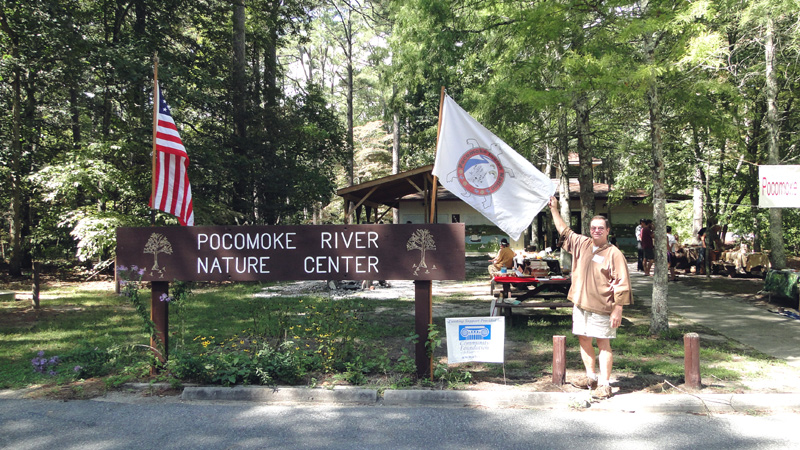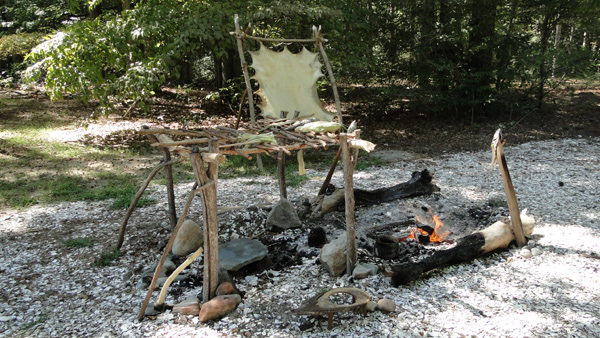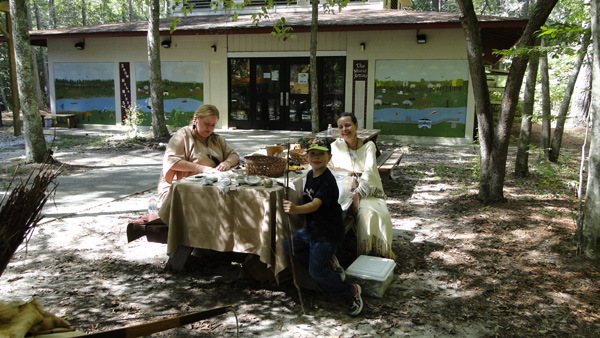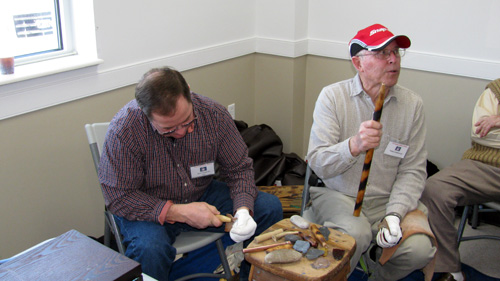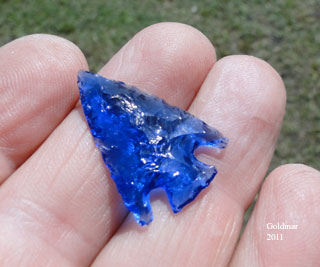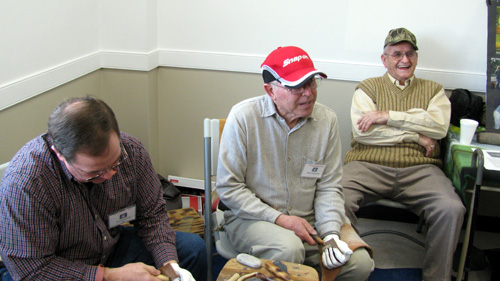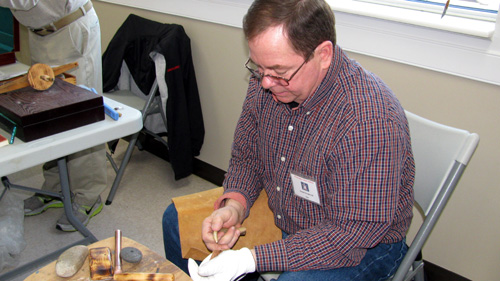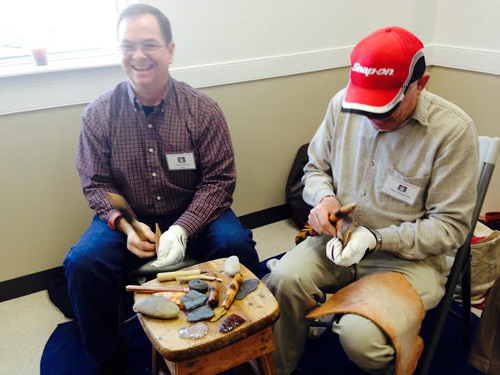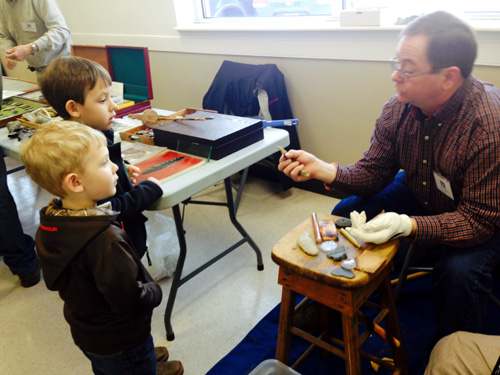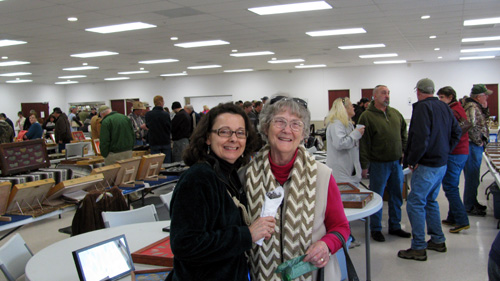
Native American Artifact Exhibit Saturday, March 7th, 2015 East New Market, Maryland Sponsored by the Dorchester County Historical Society
|
| May 17, 2014 Nanticoke Heritage Day Odette Wright at the Nanticoke Heritage Museum, Millsboro, Delaware. Tribal historian and Chief Norris Howard of the Pocomoke. |
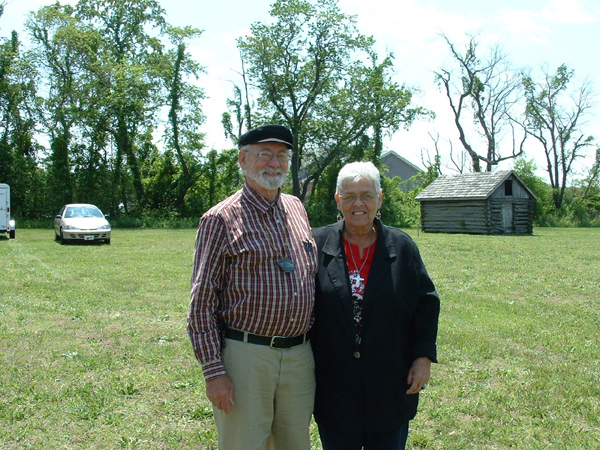 |
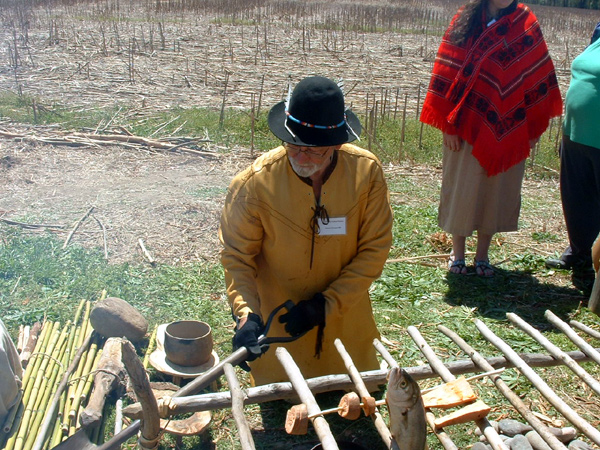 |
April 27, 2014 Handsell Chief Norris Howard of the Pocomoke Indian Nation prepares a variety of food over an open fire pit. Fish and sweet potatoes are cooked on the rack above the fire, while breads are backed on a large flat rock slap overhanging a bed of coals. The Pocomoke and Nanticoke people roasted oysters and other bivalves in the coals of a campfire. Clams, mussels and oysters were abundant throughout the entire Chesapeake Bay watershed. The famous Maryland Blue crab was trapped in the bay and rivers by the native people and also steamed in their own shell over hot coals near the edge of the fire. 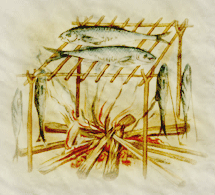 |
| On Sunday April 21, 2013
the Pocomoke Indian Nation put on several demonstrations for the
public at Mother Earth Day at Handsell Chicone
Indiantown in Dorchester County, Maryland. The tribe
demonstrated the construction of a log canoe and flint knapping
of stone and glass. Both demonstrations where enjoyed by the
many visitors to the village. The dug-out canoe is an ongoing project started several years ago. A fire is started in charcoal and allowed to burn down into the log until the wood is charred. After cooling the charred material is removed with oyster shells or sharp scrapers made of stone. Mud is placed in areas that are not intended to burn. Other members demonstrated knapping of stone and glass. Knapping is a term used to describe making of stone tools, which was vital to the survival of the Native Americans. |
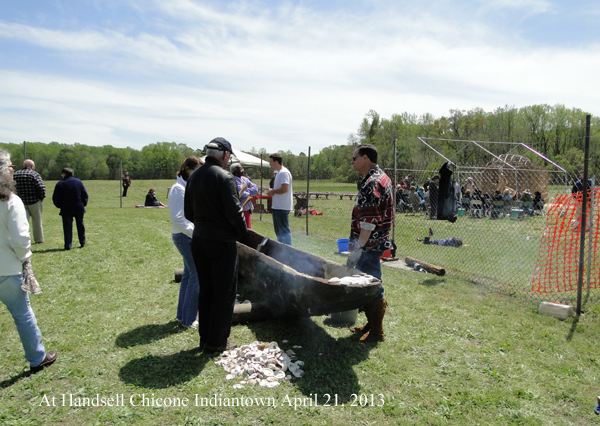 |
| On
Saturday Oct 5, 2013 the Pocomoke
Indian Nation demonstrated friction fire starting as they
continued working on their dug-out canoe at the
Nanticoke River Jamboree.
The event was well attended in Indiantown,
near Vienna Maryland. The Pocomoke Indian canoe has been
on display at the
Nabb Research Center for Delmarva History and Culture at
Salisbury State University. The tribe explained the process of
burning the interior wood and scraping the charred materials
from inside the hull with scrapers and oyster shells. Pottery,
fans, beads and other Native American articles were on display.
Flint knapping with glass and stone was also demonstrated at
the booth. Click on the right corner of video to enlarge. Please return after viewing video. |
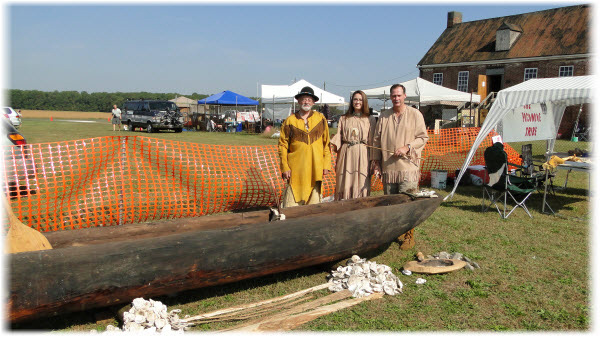 |
Native people made dug-outs up to 50 feet in length from cedar cypress trees found along the banks of the Pocomoke and Nanticoke Rivers. In the center of the canoes a fire hearth was made of wet clay to protect the wood from a small fire used to cook and keep warm. This hearth could also be used to keep a coal for starting a camp fire at night. These vessels were able to navigate the Chesapeake Bay and its many rivers. Maryland Archive records indicate the Pocomokes crossed the Bay to St. Marys during the colonial period. Native Americans had rights under Maryland Colonial law. |
Making a coal with friction using a fire board and spindle. White cedar is used for the fire board and horse tail is used for the spindle. Cedar bark and other light materials are used for tinder. The apparatus is placed on a piece of bark to keep dampness out and to transfer the new born coal to the tinder. |
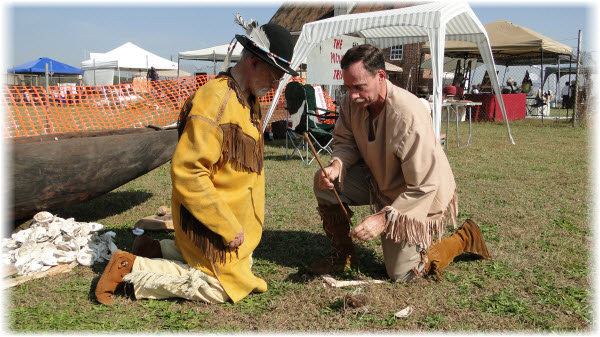 |
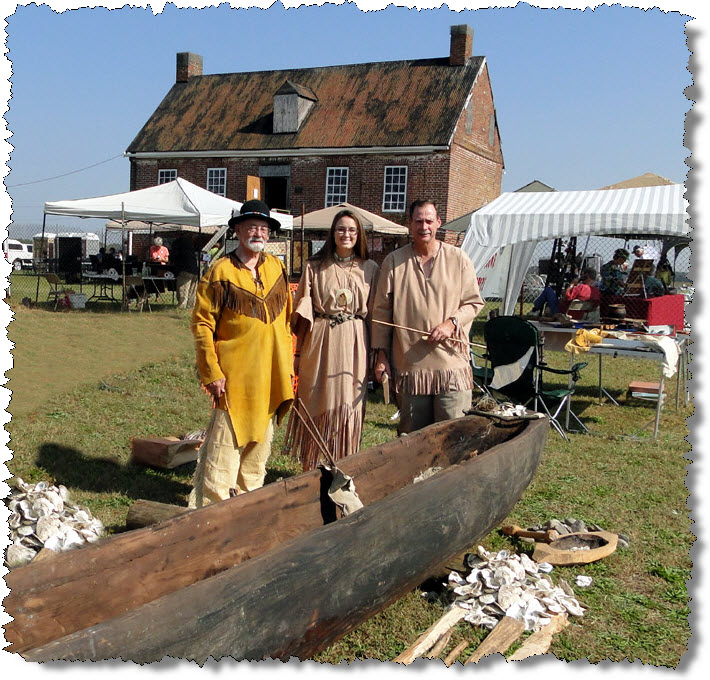 Chief Howard and Family at Chicone, Indiantown, Dorchester Co., Md. |
|
Archive of older Events Back to Home Page Visit our friends at Handsell, Nanticoke Historic Preservation Alliance, Inc All Rights Reserved © Page updated May 19, 2019 Copyrights include pictures, drawings and text Thank You |
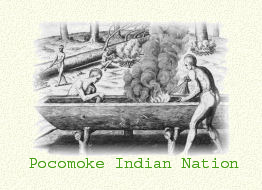 |
